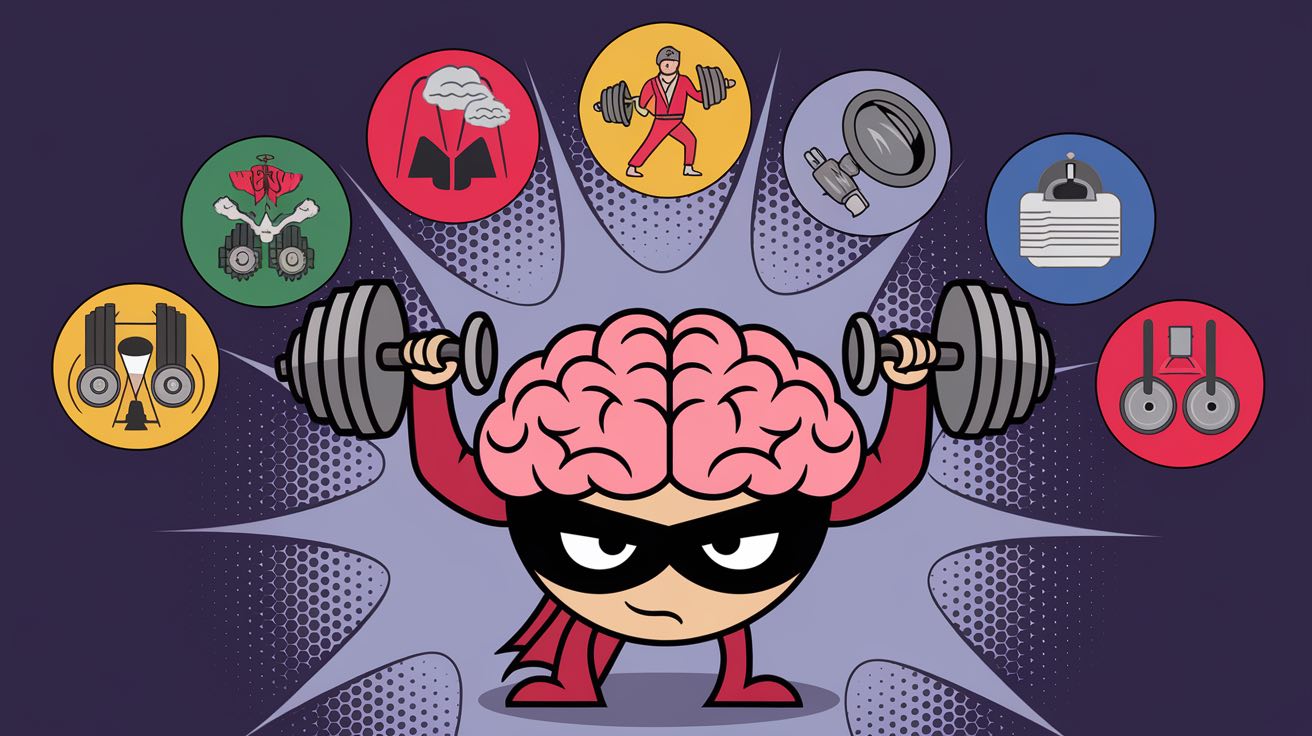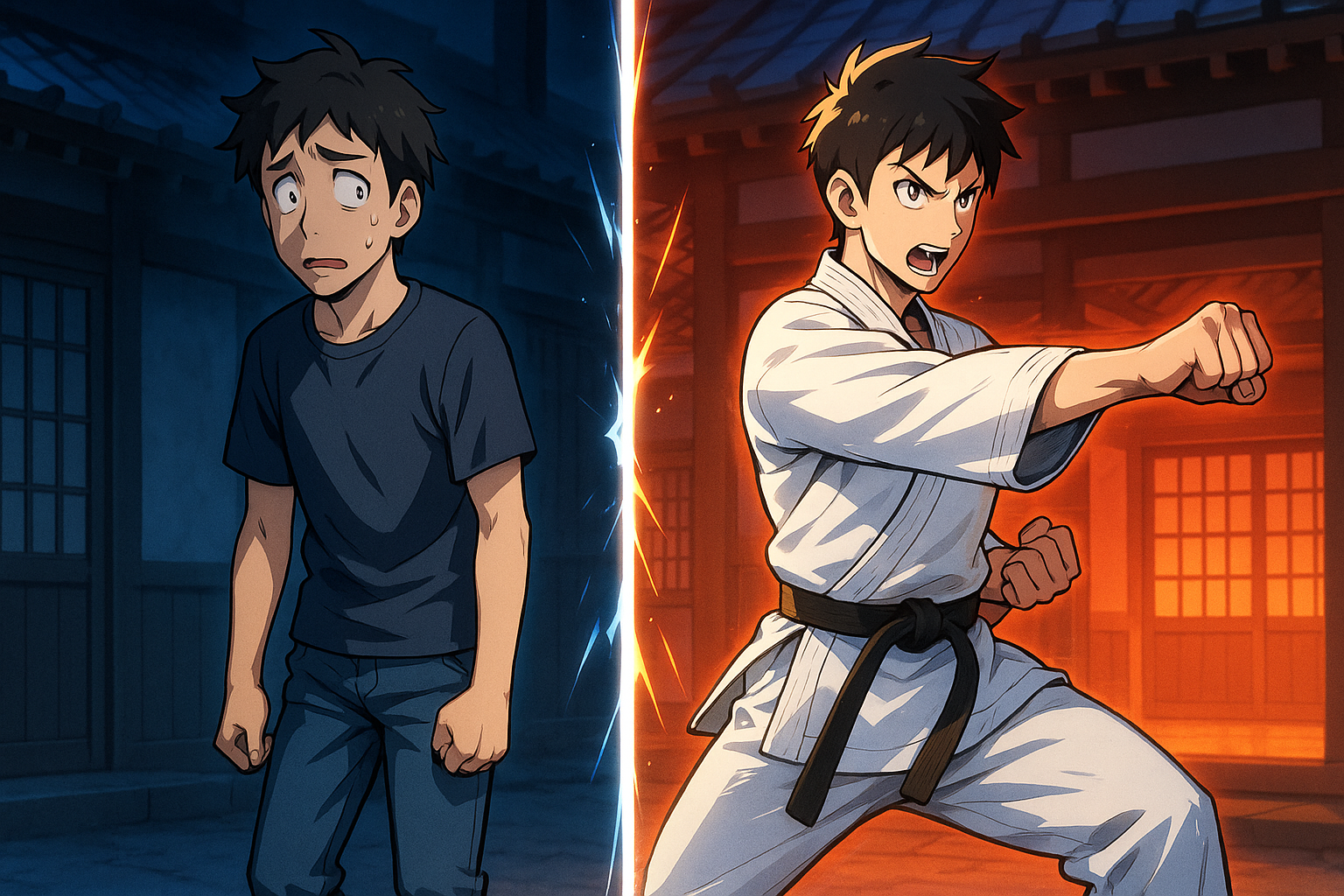Why Your Black Belt Means Nothing Until You Conquer the Real Battle in Shotokan Karate Training
Are you ready to unlock the inner game that separates the ordinary karateka from the unstoppable warrior?
Here’s the raw truth that most people won’t tell you: Shotokan karate isn’t just about mastering kicks, punches, or perfecting your kata.
The real battle is the one you fight with yourself. And mastering that battle? That’s the key to becoming a karateka who can handle anything life—or your opponent—throws at you.
Let’s be honest. Everyone feels fear. You’re not the only one who gets that sick feeling in your stomach before a kumite, especially when you know you’re up against someone stronger, faster, more experienced.
Maybe you’ve faced them before and got knocked around, and that memory sticks with you. Fear isn’t a weakness. The difference between the average practitioner and a true master is how you deal with that fear.
Do you let it stop you, or do you step forward and embrace it?
When you hone your inner game to push through fear, to use it instead of fighting against it, you stop just being a fighter—you become unshakable.
Then there’s exhaustion. You know those brutal sessions where your body feels like it’s on the verge of collapse. You’re drenched in sweat, gasping for air, every muscle aching, and then Sensei calls for more.
One more round, one more punch, one more kick. That’s the moment where the inner game kicks in. Your body wants to quit, but your mind?
Your mind is what digs deep and finds that last drop of strength you didn’t even know you had. That’s where the real power lies.
And let’s talk about showing up. We’ve all been there. You don’t feel like training. Maybe you’re still sore from yesterday. Maybe you know exactly who’s going to be there—the person who hits harder, moves faster, the one you don’t really want to face.
I’ve been there. I remember walking into squad training at Marshall Street Dojo under Enoeda Sensei, feeling the nerves hit hard.
I didn’t want to be there some days. I didn’t want to face the fear of who I might be paired with. But I showed up anyway. And you know what?
That’s where I grew the most. Not in the comfort of knowing I could win, but in the discomfort of facing my own limits—and breaking through them.
Here’s the secret most people don’t get: Shotokan karate is really a battle with yourself.
Every kihon drill? It’s you fighting to stay focused, pushing through the repetition to perfect every technique. Every kata? It’s you visualizing the fight, commanding your mind to stay sharp and precise. Every kumite? It’s you going head-to-head with fear, exhaustion, and doubt.
The bottom line is this: the real fight in Shotokan isn’t with your opponent—it’s with yourself. And once you learn how to win that internal battle, you become unstoppable. That’s the inner game.
Let’s dive into the seven secrets that will help you conquer yourself—and unlock the true power of your karate. This is where the transformation begins.
1. The Power of Zanshin: Cultivating Unwavering Focus Through Mental Preparation
At the heart of Shotokan mental preparation lies the concept of Zanshin – a state of relaxed alertness and total awareness.
The ability to maintain relaxed awareness of your opponent and your surroundings.
It’s only possible when you have no thoughts. You have to silence the inner talk.
To cultivate Zanshin:
– Practice mindfulness meditation daily
– Incorporate awareness exercises into your training
– Develop a pre-kata or pre-sparring ritual to center your mind
Remember, true strength begins in the mind. By mastering Zanshin, you’ll gain a competitive edge that transcends physical skill alone.
2. Embracing Kaizen: The Path of Continuous Improvement
Kaizen, the Japanese concept of continuous improvement, is crucial for developing your inner game in Shotokan. It’s not about making massive changes overnight, but rather about consistent, incremental progress.
To apply Kaizen to your practice:
– Set small, achievable goals for each training session
– Regularly reflect on your progress and think about where you need to improve. E.g. relaxation in your movements?
– Celebrate small victories along your journey
By embracing Kaizen, you’ll build resilience and maintain motivation, even when faced with challenges.
3. Harnessing the Power of Visualization for Kata, Kihon, & Kumite
Elite athletes across all disciplines use visualization techniques to enhance performance, and Shotokan karate is no exception. By vividly imagining successful outcomes, or visualizing your posture or the path of a punch or kick, you’re priming your brain for success.
Even when I was travelling into work on the underground, I’d visualize the path of my roundhouse kick. Seeing and feeling my hip turning over at the end so the ball of the foot was facing down.
Try this visualization exercise:
– Find a quiet space and close your eyes
– Imagine performing your kata flawlessly, feeling every movement
– Visualize yourself successfully defending against an opponent. How do you control the distance?
– Engage all your senses to make the experience as real as possible
Consistent visualization practice can lead to improved technique, increased confidence, and better performance under pressure.
4. Developing Mushin: The “No-Mind” State Approach to Achieving Black Belt
Mushin, often translated as “no-mind,” is a state of mental clarity and freedom from distracting thoughts. It’s in this state that a karateka can react instinctively and effectively.
In Zen, they call it, “mind like still water”
To cultivate Mushin:
– Practice moving meditation through kata. So no complaining to yourself.
– Engage in light free-sparring sessions to develop spontaneity
– Learn to quiet your inner critic during training
By developing Mushin, you’ll be able to respond to situations fluidly and without hesitation.
5. Building Mental Resilience Through Kime
Kime, the focused concentration of all one’s energy into a single point, is not just a physical concept but a mental one as well. It’s about channeling your willpower and determination into every action.
To strengthen your mental Kime:
– Practice deep breathing exercises to center your energy
– Focus on executing techniques with maximum intent
– Develop a strong sense of purpose in your training
By honing your mental Kime, you’ll develop the resilience to push through challenges and setbacks.
6. Embracing Shugyo: The Way of Austere Training In the Dojo
Shugyo refers to the intense, often grueling training that forges both body and mind. It’s through this challenging practice that true mental toughness is developed.
Incorporate Shugyo into your training:
– Push yourself beyond your comfort zone regularly
– Engage in challenging endurance exercises
– Practice in adverse conditions (heat, cold, early mornings)
Remember, it’s in moments of difficulty that we grow the most. Embrace the challenge of Shugyo, and watch your mental fortitude soar.
7. Cultivating Zanshin For Grading: The Art of Emotional Control
In the heat of competition or conflict, emotional control can make the difference between victory and defeat. Zanshin, in this context, refers to maintaining composure under pressure.
To develop emotional Zanshin:
- Practice stress inoculation through intense sparring sessions
- Learn breathing techniques to manage adrenaline
- Develop a pre-competition routine to center yourself
- Create a self-hypnosis recording you can listen to outside of the dojo to reinforce your metal preparation.
By mastering your emotions, you’ll be able to perform at your best when it matters most.
The Science Behind Mindset Mastery in Karate
Recent neuroscience research has shed light on why mental training is so effective in martial arts:
1. Neuroplasticity: Regular mental practice actually changes the structure of your brain, strengthening neural pathways associated with focus and emotional control.
2. Stress Reduction: Mental techniques like meditation and visualization have been shown to lower cortisol levels, reducing stress and improving performance.
3. Improved Motor Learning: Visualization activates the same brain regions as physical practice, enhancing skill acquisition and retention.
4. Enhanced Mind-Body Connection: Mental training strengthens the neural connections between the brain and muscles, leading to more efficient and effective movements.
Frequently Asked Questions On Mental Preparation For Shotokan Karate Training
Q: How long does it take to develop mindset mastery in Shotokan?
A: Like any skill, developing mindset mastery is an ongoing process. However, many practitioners report noticeable improvements in focus and resilience within 3-6 months of dedicated practice.
Q: Can mindset mastery techniques help with competition anxiety?
A: Absolutely! Techniques like visualization, breathing exercises, and pre-competition routines can significantly reduce anxiety and improve performance. A 2019 study in the Journal of Sports Sciences found that karate athletes who used mental preparation techniques showed a 30% reduction in competition anxiety compared to those who didn’t.
Q: Are these mindset mastery techniques applicable outside of karate?
A: Definitely! The mental skills developed through Shotokan practice can be applied to all areas of life. Many practitioners find that their improved focus, resilience, and emotional control benefit them in their careers, relationships, and personal growth.
Q: How can I incorporate mental training into my physical practice?
A: Start by setting aside 10-15 minutes before or after each training session for mental exercises. This could include meditation, visualization, or reflection on your progress. Gradually, you’ll find ways to integrate mental training into your physical practice, such as focusing on Zanshin during kata or applying Mushin during sparring.
Q: Can children benefit from mindset mastery training in Shotokan?
A: Absolutely! In fact, introducing mental toughness concepts early can be incredibly beneficial. A 2020 study in the International Journal of Environmental Research and Public Health found that children who practiced martial arts with a focus on mental skills showed improved emotional regulation and increased self-confidence compared to those who focused solely on physical techniques.





Leave a Reply